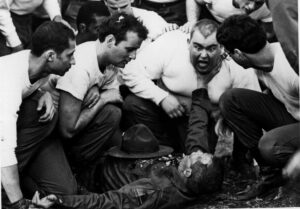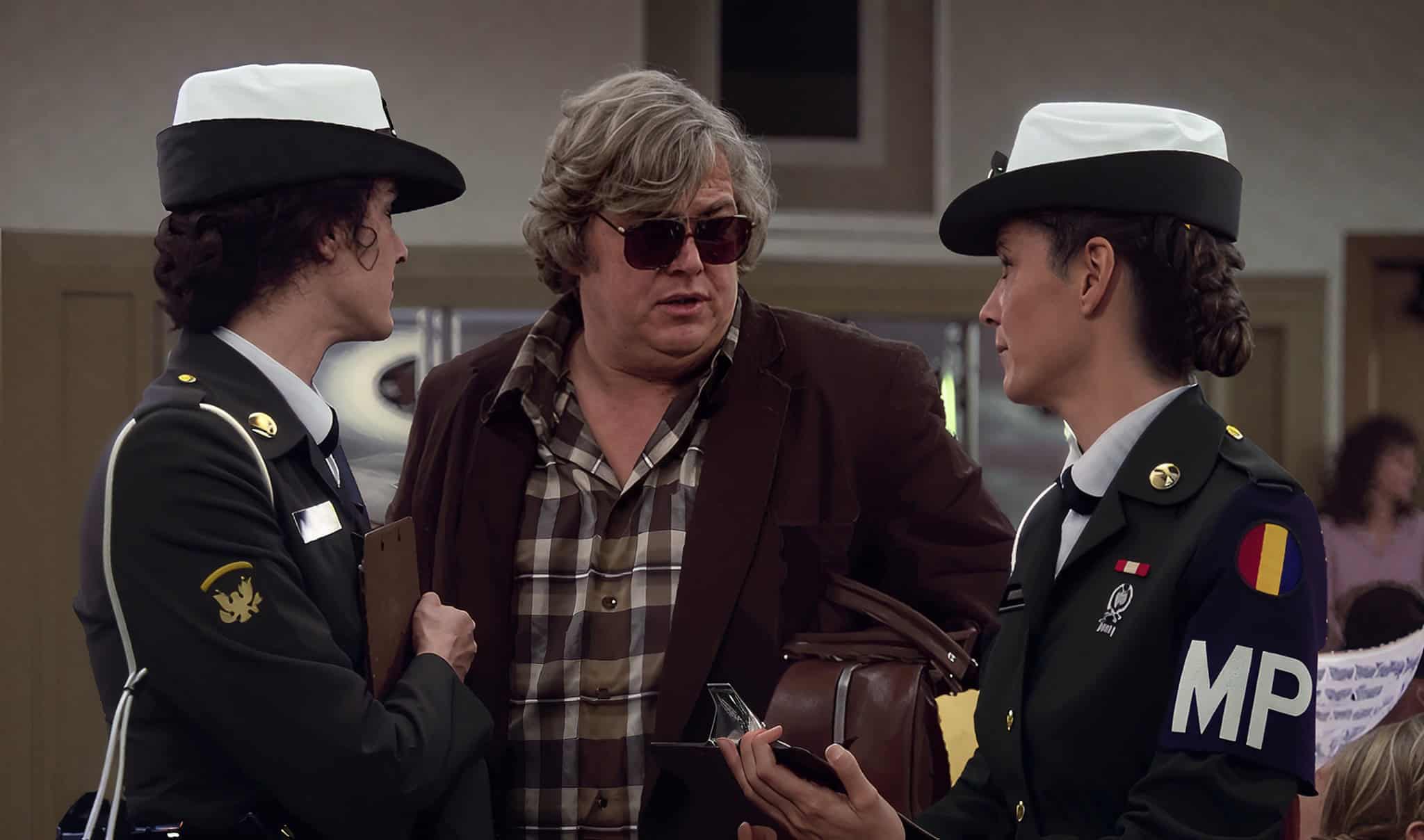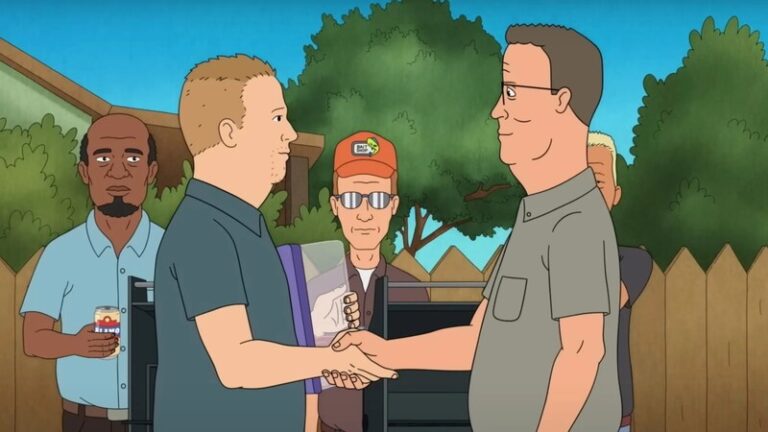Bill Murray Recalls John Candy’s Aversion to Shirtless Mud Wrestling Scene
We’ve all had those cringe-worthy workplace moments where you’d rather hide under your desk than face another soul. But imagine having yours immortalized on film for millions to see. That’s exactly what happened to John Candy during the making of Stripes, and honestly, it’s enough to make anyone’s stomach turn.
The new documentary John Candy: I Like Me doesn’t just celebrate the beloved comedian’s legacy—it rips the bandage off some pretty raw wounds. And let me tell you, watching Bill Murray describe his friend’s discomfort during that infamous mud wrestling scene hits harder than a Mike Tyson uppercut.
The Scene That Should Never Have Been
Here’s the thing about Hollywood: sometimes they ask you to do stuff that makes your soul die just a little bit inside. For John Candy, that moment came in Ivan Reitman’s 1981 military comedy when his character had to strip down and wrestle in mud with a group of women.
“He was very upset about Stripes, the scene that he had in the mud,” Andrew Alexander recalled in the documentary, one of Candy’s longtime friends and collaborators. And honestly? Can you blame the guy?
Dave Thomas, who served as the emcee for that particular slice of cinematic torture, didn’t mince words: “I was the emcee in the wrestling match, which he did not want to do. It was like, John take off your shirt and roll around in the mud with a bunch of strippers.”
But here’s where it gets really heartbreaking—John Candy refused to go completely shirtless. He wore a long-sleeve T-shirt because the thought of baring his chest was just too much. Think about that for a second. This is a guy who made millions laugh, yet he couldn’t bear the thought of showing his body on screen.
Bill Murray’s Heartbreaking Revelation

Bill Murray, never one to sugarcoat reality, painted an even grimmer picture of what went down during filming. The women in the scene “got into it,” Murray explained. “They were all fit. They started pulling his ears and stuff.”
But here’s the kicker that’ll make your blood boil: “People would take a little advantage because they’d think you could do what you want to hurt him. [They’d think that] he’s so big, I couldn’t possibly hurt him.”
Murray’s observation cuts deep: “He didn’t like that, he didn’t enjoy that. I understood that.” Coming from someone as notoriously deadpan as Bill Murray, those words carry serious weight.
The Media Circus That Broke a Gentle Giant
The documentary doesn’t just focus on one uncomfortable scene—it exposes the relentless media scrutiny that John Candy faced throughout his career. Archival footage shows journalists asking him absolutely tone-deaf questions about his weight, like vultures circling their prey.
One particularly cringe-worthy interview features a journalist quoting Candy’s own Stripes line back at him: “Tell me, inside John Candy, is there really a ‘lean, mean fighting machine,’ dying to get out?”
Candy’s response? A simple but devastating: “No, there isn’t. I’m quite happy the way I am.”
But the interviewer couldn’t leave it alone, pushing further with questions about whether he felt pressure to become a “svelte-look guy.” The whole exchange feels like watching someone slowly twist a knife.
When Body Shaming Disguised Itself as Interview Questions
Tom Hanks, who worked with John Candy on Splash, offers some insight into how the comedian dealt with this constant barrage of body-focused criticism. “To say that John hated that? John just wouldn’t accept it, and I think that’s a different version of saying ‘hated’ it. There was no self-loathing in John. There was just another degree of artistic purity.”
That’s a diplomatic way of saying Candy refused to let the bastards get him down, even when they were relentless in their attacks on his appearance.
The Man Behind the Laughter

What makes this whole situation even more tragic is learning about John Candy’s character outside of these painful moments. The documentary reveals how protective he was of younger actors, particularly Macaulay Culkin during the filming of Uncle Buck.
Christopher Candy, John’s son, reflects on his father’s mentorship: “We had heard stories that [Culkin] had a tough situation and knew that, but I didn’t really kind of get that that’s what he was getting at [in the documentary]. And it really hits as I watch the movie now, that he really appreciated our dad kind of looking out for him.”
The Legacy of a Gentle Giant
John Candy: I Like Me, directed by Colin Hanks and produced by Ryan Reynolds, premieres on Amazon Prime Video on October 10, 2025. The documentary features contributions from comedy legends including Steve Martin, Catherine O’Hara, Dan Aykroyd, Eugene Levy, Andrea Martin, and Mel Brooks.
But beyond the star-studded cast of talking heads, this film serves as a reminder of something we often forget in our celebrity-obsessed culture: famous people are human beings with feelings, insecurities, and pain points just like the rest of us.
Bill Murray’s candid reflections on his friend’s struggles remind us that behind every laugh, there’s often someone dealing with their own private hell. And sometimes, that hell is created by an industry and media culture that values entertainment over basic human decency.
John Candy died of a heart attack in 1994 at just 44 years old. While we’ll never know if the constant scrutiny and pressure contributed to his early death, one thing’s crystal clear: he deserved so much better than having to endure that mud wrestling scene—or any of the cruel questions that followed.






